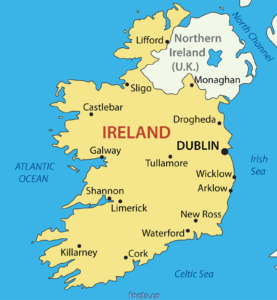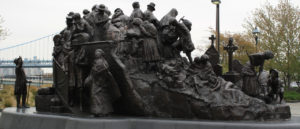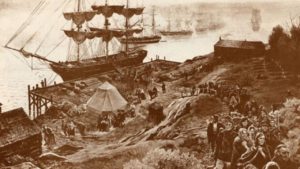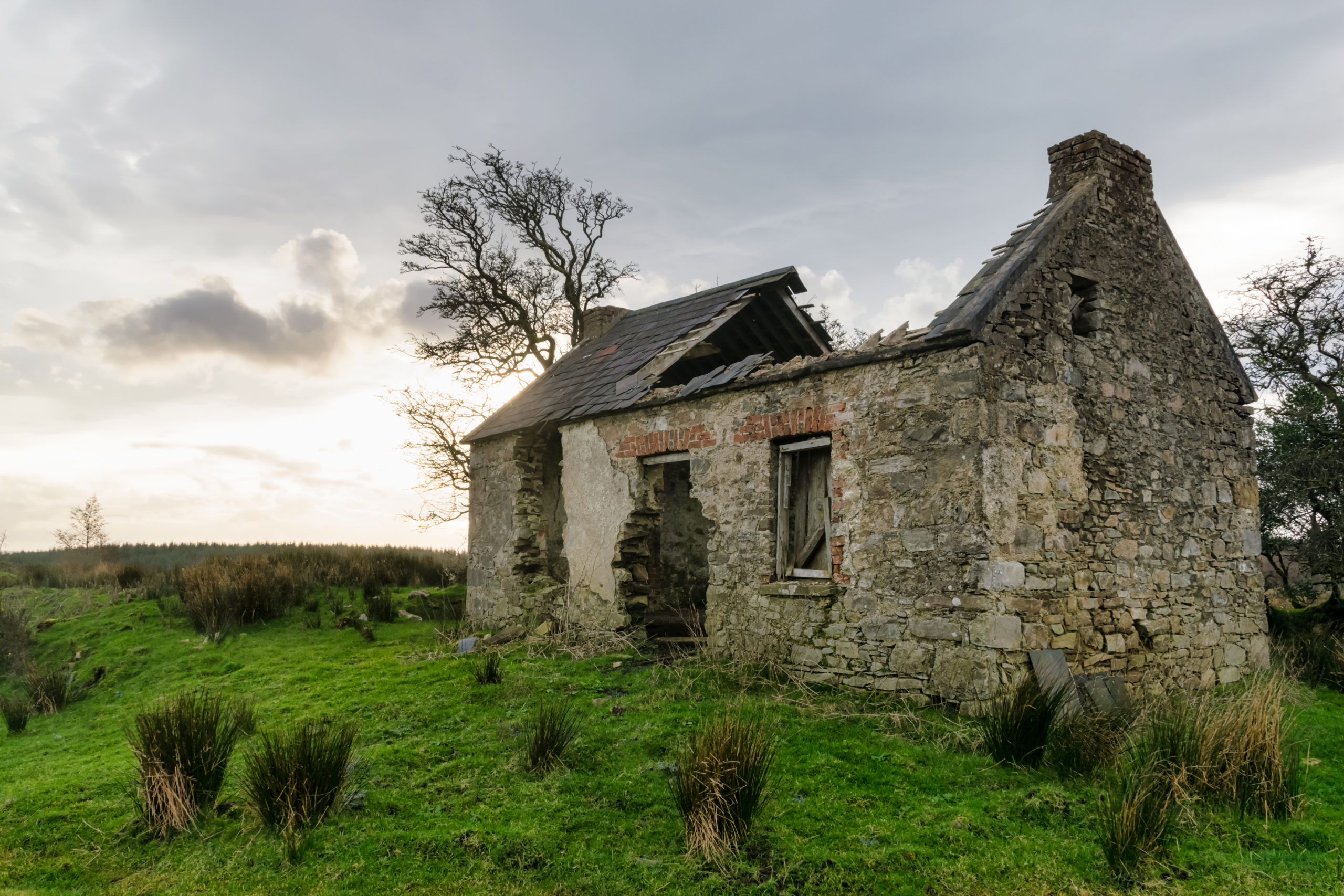The Daltons Come to America
Ireland is a beautiful island located in northwest Europe. Separated from Great Britain by the Irish Sea, the North Channel, and St. George’s Channel, it’s the 2nd largest island of the British Isles and the 20th largest island on Earth. Geopolitically, Ireland is divided between the Republic of Ireland, which covers 83% of the island and contains 73% of its inhabitants, and Northern Ireland, which remains part of the United Kingdom. The divide has been in place since 1921.

Figure 1:
A current map of Ireland showing the border between Northern Ireland (White) and the Republic of Ireland (Cream)
Ireland experienced an economic boom in the late 20th century, in industries such as financial services, pharmaceutical and medical technology, software and IT services, and the export and trade industry. This boost to the economy gave the island’s inhabitants a standard of living that can now be compared against other first-world countries across the world in terms of average quality of life… But it wasn’t always this way.
During the mid-19th century, agriculture was the main economy of Ireland. While this was not uncommon, agricultural management in Ireland saw widespread problems by 1845. Farms had grown unsustainably small due to mass subdivision and were poorly managed by largely absent landlords. This resulted in a vast majority of the population relying on the humble potato for subsistence; as a low maintenance and high-yield vegetable that was cheap to sow, it was virtually the only crop that could be grown in sufficient quantities to feed a poor family. While there were multiple varieties of potato available in Ireland, the Irish were heavily dependent upon only two common, high-yielding types. This was a disastrous contributor to the tragedy that soon struck the island.
In 1845 Ireland saw the accidental introduction of Phytophthora Infestans, a strain of water mold capable of quickly decimating large plots of sown land. While it is unknown exactly where it came from, we do think North America was the likely culprit; Ireland’s trade partner had experienced crop failure due to the same mold for two years prior. Thanks to unusually cool and moist weather patterns across Ireland that year, pockets of mold soon thrived into huge colonies, and most of the crops available to the population were destroyed by a disease known as Late Blight. From 1846 through to 1849, potato crops continued to be destroyed by the disease. In Ireland’s history, this is known as the Irish Potato Famine.
 Figure 2:
Figure 2:
The Philadelphia Irish Famine Memorial. Dedicated on 10/25/2002, the memorial is located on Front St. near Penn’s Landing and was sculpted in bronze by artist Glenna Goodacre (1939-2020).
During this period, Ireland’s population dropped at an alarming rate; from a healthy 8.4 million before the Famine to 6.6 million by 1851. While exact figures may never be known, it is thought that 1 million people died from starvation or other famine related diseases. The remaining 2 million people fled the country to England, Scotland, North America and Australia.
Escaping the disease and starvation in their homeland was a challenge, to say the least. Crowded and disease ridden, with little to no food or water, the vessels that carried Irish refugees across the Atlantic were soon referred to as ‘coffin ships’. While it was the cheapest way to cross the ocean and therefore the only means of escape for many desperate families, mortality rates as high as 30% were not uncommon. The risk was no greater than staying in their devastated country, but to uproot entire generations to board these vessels, knowing many would never set foot on shore again… It’s hard for us to imagine, but it happened, and we all know continues to happen today.
 Figure 3:
Figure 3:
Surviving Irish refugees entering Ontario, Canada, after fleeing the Famine.
It was during this difficult time that the Dalton branch of my family came to the United States. Departing from County Cork, a region in Ireland known for its coal mining, they ended up in Schuylkill County, Pennsylvania; a coal mining region in the Appalachian Mountains. It is unclear exactly what year they immigrated from Ireland or if the family came together or separately, but by 1850 my Dalton family was living in the town of Blythe.
As seen in the 1850 census, the entire family unit included:
Family Member Age
Mary Dalton 60
Thomas Dalton 29
Patrick Dalton 28
John Dalton (Elder) 20
George Dalton 17
John Dalton (Younger) 7 <—My gg-grandfather
According to records found to date, Mary is the mother of the four eldest boys. We also know that Mary’s husband was named George. He was most likely deceased by 1850, but it’s unclear whether he died in Ireland, during the ocean voyage, or after arriving in America. I was glad to find the death certificate of John (Younger), my 2nd great grandfather. While it was obviously unlikely that he was Mary’s son due to his age, I was surprised to see that his death certificate lists his parents as Francis and Ann Dalton. This leaves his relation to the family a bit of a mystery. Unfortunately, there are no more known records of George, Francis or Ann Dalton. I assume all three of them passed away prior to 1850. Again, the whereabouts of their deaths and burials are a mystery.
Recent tests through AncestryDNA have revealed positive DNA link from my ancestor John (Younger) Dalton to Mary and her sons. Based on the generational gaps within the DNA matches, it appears that John is Mary’s grandson, and that Thomas, Patrick, John (Elder) and George are his uncles. It was wonderful to finally place a title on their relation.
I am in the process of expanding the family tree to include all of the descendants of Mary and George Dalton. I hope of learning more about the history of this branch to my larger family, their passage to America, and their struggles to forge a path to the ever-elusive American Dream so many chased at the time.
If you are a descendent of the Dalton family, or a related family, please contact us. We would certainly welcome any new information and the opportunity to meet a new relative!
About the Blog
This website was established to assist in the research the Sawn family name as well as the many surnames associated with it. It was set up to assist in the research of these families and contains related documents and photos collected over the year. The blog represents the stories and histories uncovered about our ancestors during this research.
Recent Comments
- Sabine J on The Sauer Family and Murphy’s Law
- Daniel Sawn on The Name’s the Same
- Cleo Sawn on Where are all the Sawns?
- Cleo Sawn on Who is in my family tree?
Categories
- Cultural and Regional Studies (3)
- Economic and Business History (1)
- Genealogy and Ancestry (8)
- Heritage and Legacy (1)
- Historical Context and Events (3)
- Historical Figures and Impact (2)
- Historical Records and Research (2)
- Military and War History (4)
- Monuments and Memorials (1)
- Personal Histories and Narratives (7)
- Research Techniques and Analysis (1)
- Tragedies and Accidents (3)

